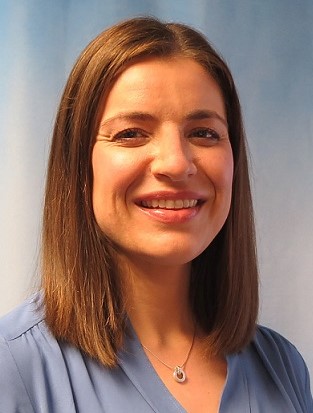Hope For Thinning Bones

By Natalie Chilaka, MD
Bone is a dynamic living tissue that grows and changes throughout life. Through the process of bone remodeling, old bone is removed and new bone is made. It takes adults approximately 10 years to turnover their skeletons. As we age, new bone formation may not keep pace with old bone resorption. Over time, this imbalance can result in osteoporosis – a disease where the bone is weak and brittle.
Bones with osteoporosis are more porous than healthy bones. Thin bones with bigger holes and spaces can easily break from a simple fall. In severe cases, weakened bone can break from a minor bump or even a cough or a sneeze. Osteoporosis itself does not cause pain or other symptoms. Many people with osteoporosis do not know they have the condition until they break a bone.
In some cases, people have back pain and do not realize that they have suffered a spine fracture from osteoporosis. In addition to pain, these osteoporosis-related spine fractures can cause loss of height and increased curving or hunching of the back that can disrupt balance and make it easier to fall.
Osteoporosis is a serious medical condition that can occur in anyone and is common in older adults. Women and people of Caucasian and Asian descent are at increased risk for osteoporosis. Osteoporosis screening is recommended for all women 65 years and older and all men 70 years and older. Any man or woman who breaks a bone after age 50 should also be screened for osteoporosis. Earlier screening is recommended for high-risk individuals, including those with a family history of osteoporosis and those with certain medical problems such as diabetes, kidney disease, rheumatoid arthritis, prior chemotherapy, prior gastric bypass, gastrointestinal disease, HIV/AIDS and anorexia nervosa. Long-term use of several medications, including medications commonly prescribed for heartburn, some anti-seizure medications, and medications that block estrogen production prescribed to some breast cancer patients, can also contribute to bone loss and increase the risk of osteoporosis.
The only way to diagnose osteoporosis before a bone breaks is with a bone density test called a DEXA scan. A DEXA scan is a quick and painless test that uses a special x-ray technique to determine if a person has osteoporosis and can also help predict the risk of future fractures.
Thankfully there is hope for thinning bones! Leading a healthy and active lifestyle can help to maintain and strengthen your bones. The mechanical forces imparted by simple weight-bearing exercises such as walking and lifting light weights help stimulate the skeleton to make more bone as it continues to renew itself throughout your life. Regular exercise also improves your overall strength and balance, which helps you avoid falls. Fall prevention is an important part of fracture prevention.
A balanced diet rich in calcium, vitamin D and protein also helps to optimize bone health. In addition to dairy, good sources of calcium are white beans, leafy dark green vegetables like spinach, kale and collards, and certain fish like sardines, salmon, perch and rainbow trout. Some foods are also fortified with extra calcium, such as some orange juices, oatmeal and breakfast cereal. Vitamin D comes from foods like fatty fish (tuna, mackerel and salmon), beef liver, cheese, egg yolks and fortified foods such as some dairy products, orange juice, soy milk and cereals. Many people also benefit from calcium and vitamin D supplements. Additionally, limiting alcohol consumption and not smoking are important ways to help prevent osteoporosis.
For people who have been diagnosed with osteoporosis, optimizing lifestyle factors alone is typically not enough to meaningfully reduce the risk of future fractures and targeted medication to increase bone mass is almost always indicated. With a thoughtful treatment plan, modern osteoporosis medications can actually reverse osteoporosis – improve the bone so much that it is no longer osteoporotic – in many patients.
Fractures are painful, may require surgery and hospitalization, typically have longer recovery periods, and can be life-changing events. If you are at risk for osteoporosis, ask your doctor if you need a bone density scan. Maintaining your bone health to prevent fractures is one of the most important things you can do to help you stay mobile and independent as you age. It is never too late to start treatment for osteoporosis.
____________
Dr. Natalie Chilaka is an orthopedic trauma surgeon who specializes in fracture care and osteoporosis treatment. She sees patients at UM BWMC Orthopaedics in Glen Burnie. Call 410-553-8170 to make an appointment.
